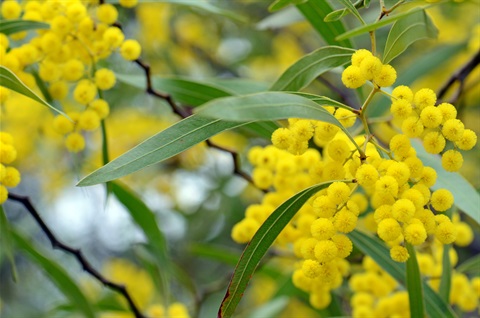Environmental maps and data

Council and the community have access to a variety of different map products to assist with understanding the local environment in the Wingecarribee Shire and across the state.
The State Vegetation Type Map (SVTM) is a digital regional-scale map of NSW vegetation, that visualises plant community type, vegetation class and vegetation formation. State Government has also developed a complementary app and website called ‘Trees Near Me NSW’.
The Trees Near Me NSW allows users to see the different plant species (e.g. trees and shrubs) that are predicted to inhabit the area. Beyond building an understanding about the different and unique vegetation found in the Wingecarribee Shire, it can also help individuals select plant species most suitable to their property and backyard. For more information about how to use the app, you can watch the tutorial here.
Council is also working on a fine-scale native vegetation map that will refine the regional-scale SVTM to enhance our ability to protect important habitat, particularly koala habitat across the Shire.
Soils Near Me NSW is a similar app that shows predicted soil classifications in the area, land and soil capability classes and acid sulfate soil risks which can inform land use and land management decisions.
The Biodiversity Values Map is a State Government developed tool that identifies land that has high biodiversity value that is sensitive to impacts from development and clearing. An example is a threatened ecological community such as Southern Highlands Shale Woodland that is found in the Wingecarribee Shire.
The map has been developed so that more information can be added to it over time so it becomes more comprehensive as research into vulnerable species and ecological communities continues.
BioNet is NSW’s biodiversity database managed by the NSW Government. The online database includes the following data collections:
This is the NSW database used to make decisions about possible environmental impacts as part of development and projects.
The Atlas of Living Australia (ALA) is a multipurpose digital platform that is managed by CSIRO. It has been developed at a national level and enables users to explore biodiversity records (datasets and spatially) across Australia. It also has project creation and management opportunities, such as the Citizen Science Project Finder.
The community can help contribute to the ALA by participating in citizen science initiatives. Visit Council’s webpage Citizen Science Opportunities for learn how to get involved.
The Fisheries Spatial Data Portal is a digital map that allows users to explore important fish habitat across the state as well as critical habitat for vulnerable fish (e.g. Macquarie Perch) and invertebrate species (e.g. Fitzroy Falls Spiny Crayfish).